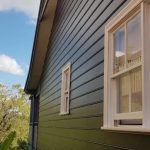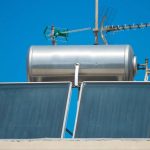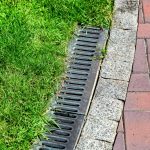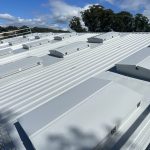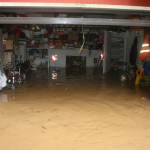Gold Coast Plumbers Explain the Best Fixes for a Flooded Garage
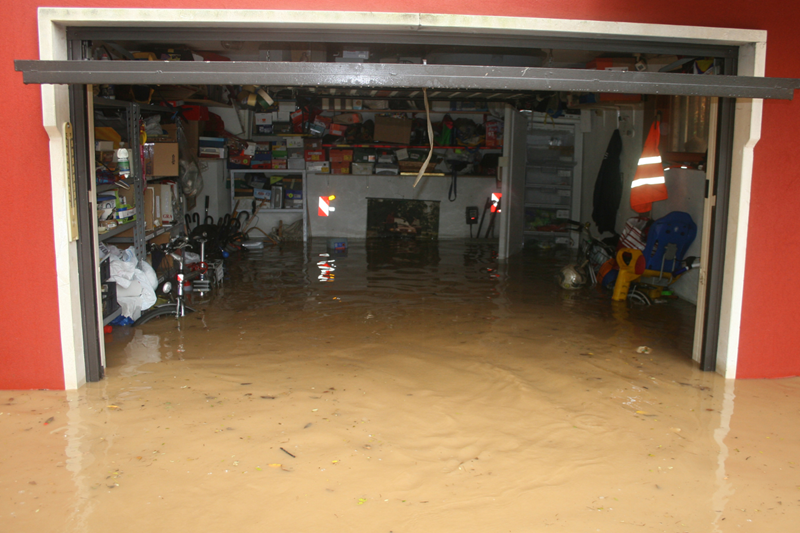
Few things are as gut-wrenching as seeing your garage floor underwater, especially when it’s your tools, gym gear, or storage boxes floating in the mess. It’s frustrating, inconvenient, and enough to make you wonder how to fix a flooding garage without calling for help every time it rains.
But here’s the truth: flooding garages aren’t bad luck; they’re just a plumbing issue waiting to be solved.
Here’s the thing about garage flooding: it doesn’t take a major storm to cause it. Sometimes, it’s just poor drainage or a door seal letting the rain in. Drain Masters Plumbing shares plumber-approved fixes that you can start with right away.
1. Repair Foundation Cracks to Keep Water Out
Cracks in your garage floor form slowly as your home settles or the concrete expands and contracts with temperature changes.
Here on the Gold Coast, the mix of heat, humidity, and occasional heavy rain puts extra stress on concrete surfaces. Gold Coast plumbers from Drain Masters Plumbing share that these cracks appear:
- Along the garage floor, where water tends to collect.
- Near wall joints or corners that take on the most pressure
- After long dry spells followed by sudden rain
The best part is that most small cracks don’t need major repairs. You can handle them at home using these easy methods.
- Concrete Crack Filler. Comes in tubes or bottles. Best for thin surface cracks.
- Epoxy or Polyurethane Injections. A bit stronger. Best for deeper cracks.
- Hydraulic Cement. Best for larger or active cracks.
- Waterproof Concrete Sealant. Apply a thin layer of sealant over the repaired spot.
Drain Masters Plumbing recommends checking your garage after every big storm. If you spot new cracks or notice moisture creeping in, take action early. Most minor cracks can be patched at home, but ongoing leaks mean there could be a drainage issue that needs a plumber’s attention.
2. Install Channel or Strip Drains at the Garage Entrance
Ever notice how rainwater always seems to head straight for your garage instead of the drain? That’s where a channel drain comes in handy.
Gold Coast plumbers share that these drains are one of the most effective long-term fixes for homes that sit lower than the driveway or in areas that get heavy runoff during storms. Strip drains work by intercepting water at the surface and giving it somewhere else to go.
- Look for PVC or polymer concrete materials.
- Opt for a removable grate so you can clean out easily after a storm.
- Pick a design with a slip-resistant surface, especially if the area gets wet often.
- Make sure the drain size suits the amount of water your driveway collects during heavy rain.
- The kit should be able to connect directly to your stormwater pipe without needing extra fittings.
As for installation, this one depends on how comfortable you are with digging and working around plumbing lines. Homeowners who enjoy DIY projects can install a small surface drain with basic tools, but for proper slope, alignment, and drainage connection, it’s best to let a plumber handle it.
3. Regrade or Reshape Driveway Drainage
Sometimes the problem isn’t your garage but it’s the slope leading up to it. When the driveway tilts toward your garage instead of away from it, rainwater naturally flows downhill and collects right at your door. That’s when it’s time to look at regrading or reshaping your driveway drainage.
So, does this job require a plumber? Yes, in most cases. While some homeowners try light DIY fixes using gravel, patching compounds, or small concrete adjustments, professional plumbers have the tools and experience to:
- Assess the water flow and identify where the slope fails.
- Laser-level the driveway so the slope guides water toward the drain.
- Integrate proper drainage such as a channel drain or stormwater connection.
- Compact and resurface the area with concrete or asphalt to keep the slope stable long-term.
Once the driveway is reshaped, water moves where it should: down the drain, not into your garage. It’s not the kind of job you need often, but if you’ve already tried seals, barriers, and drains and the flooding keeps coming back, regrading might be the long-term solution that finally keeps your garage dry.
4. Add a Flood Barrier to Keep Rainwater Out
A garage flood barrier is exactly what it sounds like, a simple, physical block. You’ll find them at most hardware stores or online home improvement shops. Some versions stick right onto your garage floor, while others are detachable flood boards you can pop in before a storm.
Things to Look for in a Garage Flood Barrier
- Look for barriers that are fully removable or modular.
- Custom-cut or extended to match your door width.
- Check for an interlocking system or tight seal that keeps water from sneaking through.
- Go for durable materials like aluminium, steel, or heavy-duty rubber.
- Pick one that’s easy to tuck away when dry season hits.
How to Install a Garage Flood Barrier
- The floor where you’ll place the barrier should be completely clean and dry.
- Run a tape measure along the width of your garage door, then mark where the barrier will sit.
- Trim the rubber strip with a utility knife until it fits neatly across the door.
- Use strong adhesive or mounting hardware to hold the barrier firmly in place.
- Give the adhesive a few hours (or as instructed) to fully cure before closing the garage door or exposing it to water.
Think of the flood barrier as a guard that keeps stormwater in check. It pushes the flow away from your garage so water doesn’t sit where it shouldn’t. This is a quick DIY task that makes a real difference when heavy rain hits the Gold Coast.
5. Replace Worn Weatherstripping to Stop Water Leaks
A weatherstripping is that soft rubber or vinyl strip that runs along the bottom of your garage door. Years of use can flatten the seal until it no longer blocks water. Once it breaks down, moisture easily seeps into the garage.
You can easily find replacement weatherstripping at most hardware stores or online. They come in standard lengths that can be cut to size. Just make sure to bring a small piece of your old seal or measure your garage door track so you get the right fit, some have a T-shape insert, others slide into a metal groove.
Replace Your Garage Door Weatherstripping With These Easy Steps
- Lift the garage door halfway to make space for the repair.
- Remove the old strip by pulling it out or peeling it off.
- Clean the bottom edge to get rid of dirt and old glue.
- Fit the new seal by sliding or pressing it into place.
- Trim any extra length and check that it sits flat.
Stay One Step Ahead of the Next Storm: Call Drain Masters Plumbing!
You don’t need to fix everything today, but here’s a challenge: pick 1 thing this week to protect your garage.
- check your garage door seal.
- seal up cracks and gaps.
- clear your drains before the next storm.
- add a flood barrier or strip drain if needed.
- call Drain Masters Plumbing if water still finds its way in.
And with local plumbing experts like Drain Masters Plumbing, homeowners in the Gold Coast are better equipped than ever to keep their spaces safe, dry, and ready for any weather.
For more shed and garage maintenance tips like these, explore our latest guides right here on ShedBlog





